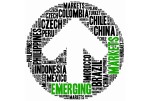MUFG: Higher risk premiums are necessary in EM rates
MUFG: Higher risk premiums are necessary in EM rates

Notwithstanding the decline in EM yields since June, we believe it is too early to conclude that domestic rates are close to peaking. The risks of a global recession is yet to be fully reflected in EM rates in the form of higher credit risk premiums, acute capital outflows and a higher pass-through effect on inflation from weaker EM exchange rates.
We believe that the reverberations of the FX pass-through could in fact be much larger this time around relative to previous downturns as, (i) the inflation basket has a high weight of commodities with most priced in USD (and rising due to its current strength), and (ii) the exchange rate pass-through is usually greater when inflation is already elevated (as it the case now).
Succinctly, there is still a need for higher risk premiums in EMs, though we recognise that they are unlikely to rise extensively given most major EM central banks now have larger FX reserve buffers and sizable interest rate adjustments have already occurred.
FX views
With the EM complex, most major currencies rallied last week after the softer than expected US CPI readings. However, as we articulated last week, we believe that EM FX is not out of danger as long as we remain in a global down-cycle. China’s economic slowdown deepened in July due to a worsening property slump and continued COVID lockdowns, with an unexpected cut in interest rates (PBoC cut both one-year and seven-day lending rates by 10bps) unlikely to offer much respite while those twin drags remain.
Retail sales, industrial output and investment all slowed and missed estimates in July. The surveyed jobless rate for those aged 16-24 climbed to 19.9% – a record high. All in, the data signals a crisis of confidence among Chinese businesses and households, adding another threat to the global economy as demand continues to ebb. For CNY, there has been limited impact for now and continues to gyrate around 6.75 vs USD.
Week in review
The disinflationary trend continued in Russia during July, with inflation falling 0.8ppts to 15.1% y/y as prices continue their normalisation after the initial shock post the Ukraine invasion. Egypt’s inflation rose by 0.4ppts to 13.6% y/y in July with devaluation risks increasing moving front of mind. Also, July inflation in Czech Republic (up 0.3ppts to 17.5% y/y) and Hungary (up 2.0ppts to 13.7% y/y) also rose both led by higher food prices. Finally, Saudi Arabia’s FX reserves eased back in July (down USD 2.6bn to USD 464bn).
Week ahead and calendar
In the coming week, we rate decisions in Turkey (MUFG: on hold at 14.00%) and Egypt (MUFG: on hold at 11.25%). Also we will have flash Q2 2022 GDP estimates for the CEE region which are likely to all come in weaker than expected given the reverberations of the war in Ukraine.
Forecasts at a glance
Headwinds facing EMs are getting stronger as persistently high inflation prompts more hawkish monetary policy responses leading to further tightening of financial conditions and more sacrifices from growth.
Core indicators
According to IIF data, EMs witnessed a week of inflows (USD 3.8bn – week ending 5 August), led by both inflows of equity (USD 2.8bn) and debt (USD 1.1bn), owing to the softer than expected US CPI print. However, we are not convinced of the pivot yet, and believe it will take far more evidence of slowing core inflation to temper Fed tightening, and looking ahead we believe the debate on inflation will shift to more about how fast it would move towards target rather than whether it has peaked or not.










